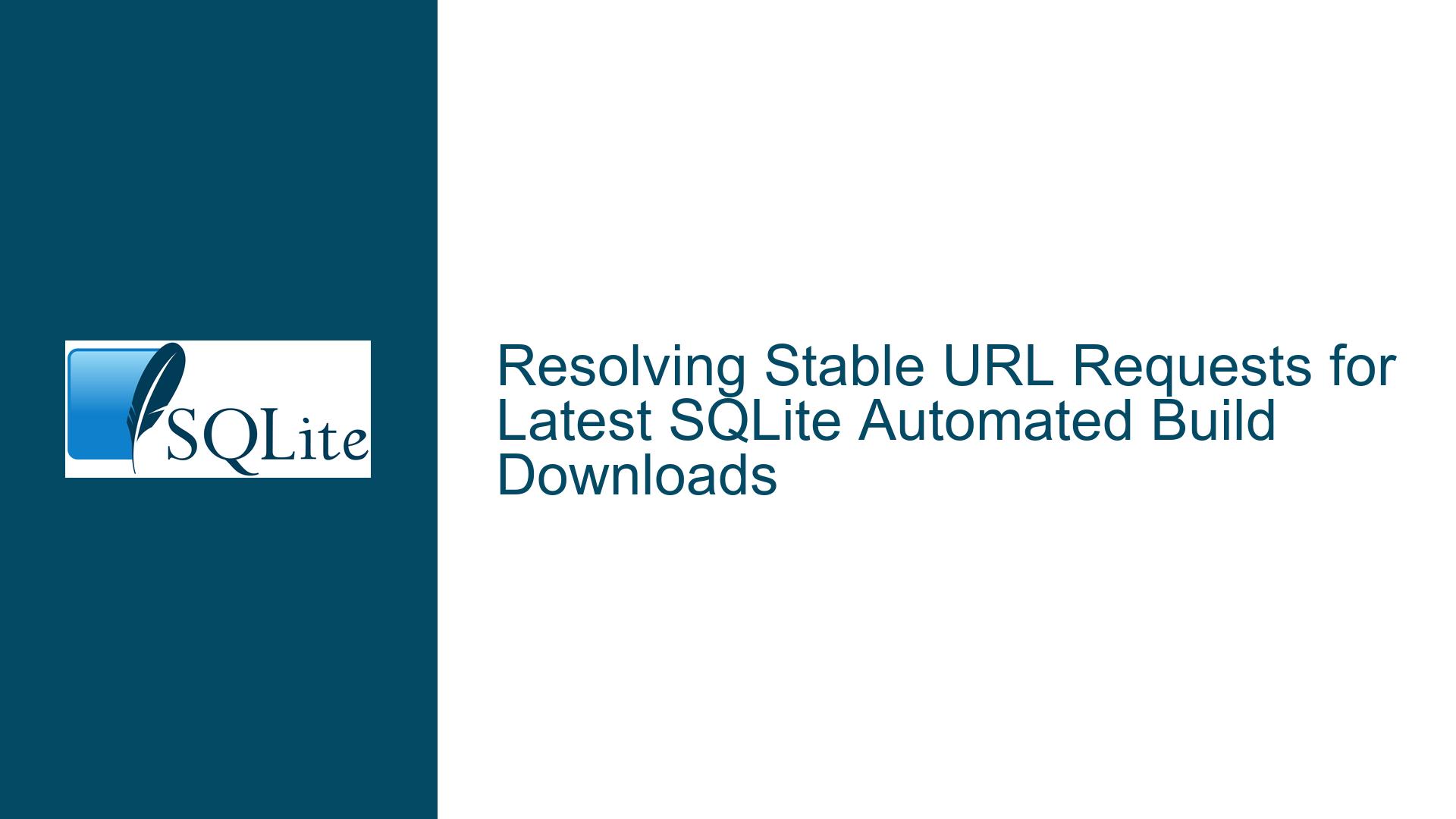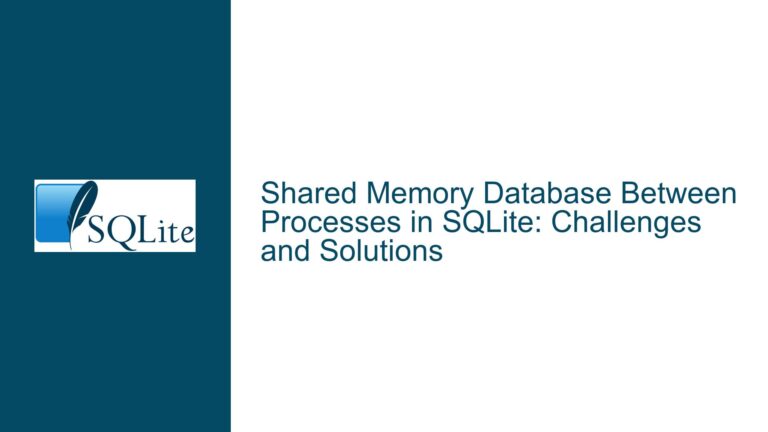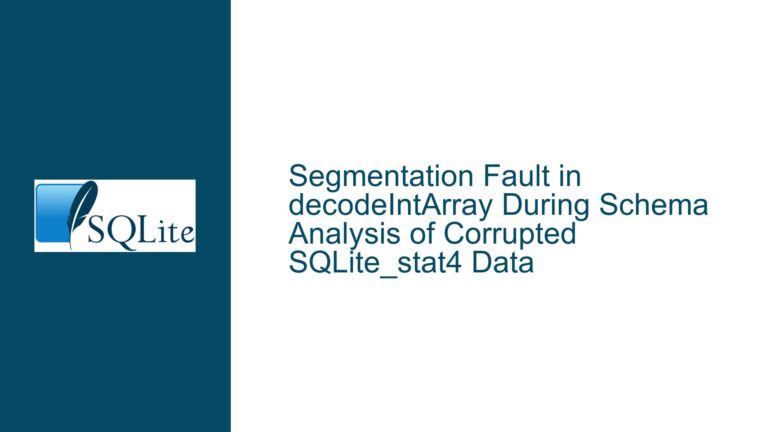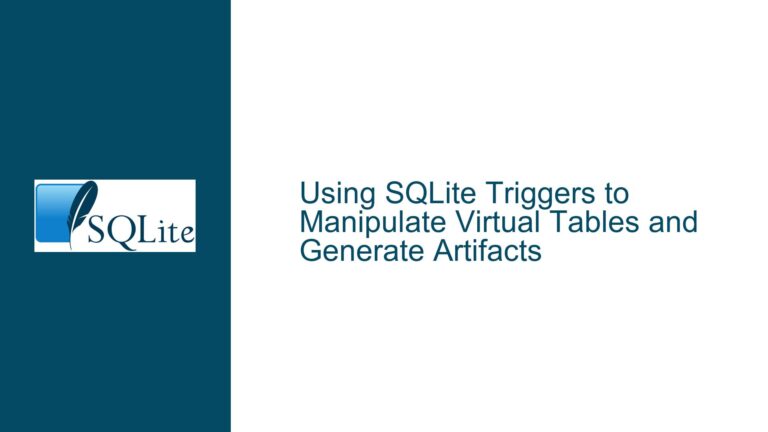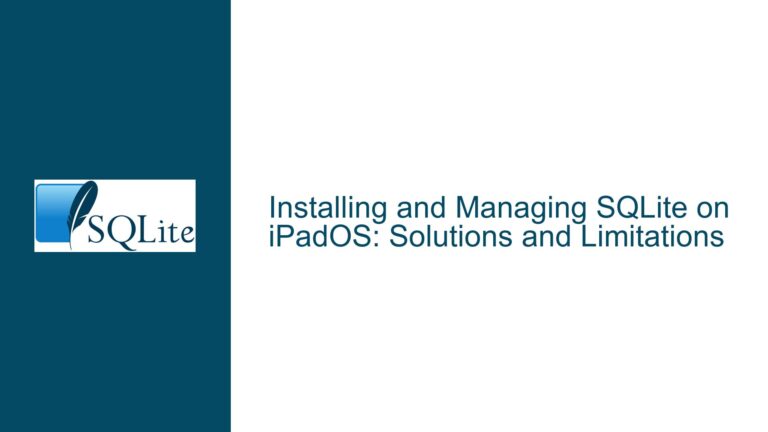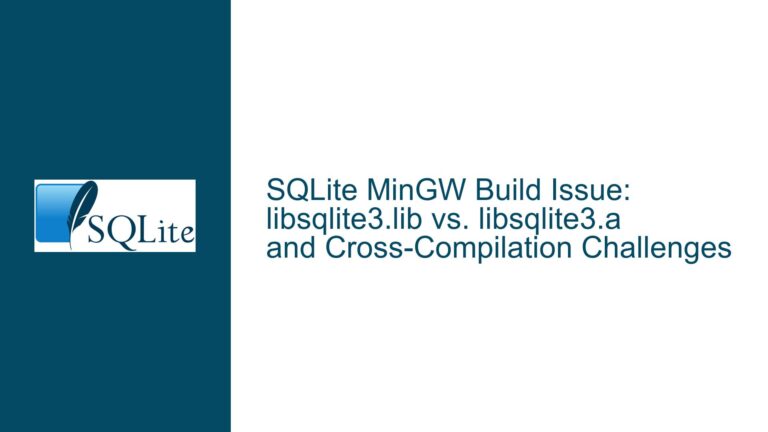Resolving Stable URL Requests for Latest SQLite Automated Build Downloads
Understanding the Need for Stable URLs in SQLite Automated Build Processes
The primary challenge addressed in this discussion revolves around obtaining SQLite’s latest release artifacts—such as the amalgamation tarball (sqlite-amalgamation.zip) and autoconf tarball (sqlite-autoconf.tar.gz)—via stable, unchanging URLs. Automated build scripts and continuous integration pipelines often require predictable download locations to fetch dependencies without manual intervention. However, SQLite’s official download page does not provide permanent URLs pointing to the latest versions of these artifacts. Instead, users must parse the HTML content of the download page, extract version-specific URLs from a structured HTML comment block labeled Download product data for scripts to read, and update their scripts whenever new releases occur.
This approach introduces friction in automation workflows. For example, a script designed to fetch the latest amalgamation must first scrape the download page, identify the most recent version number, and dynamically construct the URL. This process is error-prone due to potential changes in the HTML structure or comment formatting. Additionally, reliance on web scraping violates best practices for robustness in automation, as it introduces external dependencies on page layout stability.
The discussion highlights an alternative method using Fossil’s /tarball service, which generates on-the-fly tarballs of specific check-ins, branches, or tags in SQLite’s Fossil repository. A URL like https://sqlite.org/src/tarball/release/sqlite.tar.gz was proposed to fetch the latest release. However, confusion arose about whether this method truly provides a "latest" equivalent, how server resources are impacted by frequent requests, and whether pre-packaged release artifacts (e.g., amalgamation) can be obtained without additional build steps.
Key technical nuances include:
- Fossil’s Tagging System: The
releasetag in Fossil is not static; it moves to the most recent release check-in. This differs from a fixed URL like/latest, which might imply a different mechanism. - Tarball Generation Overhead: Generating tarballs dynamically consumes server CPU resources, particularly during compression. SQLite’s infrastructure uses caching to mitigate this, but aggressive automation scripts risk triggering server-side throttling or permanent access restrictions.
- Artifact Availability: The amalgamation and autoconf tarballs are pre-generated during official releases. The Fossil
/tarballservice provides raw source check-ins, requiring users to runconfigureandmaketo produce equivalent artifacts.
Root Factors Influencing SQLite’s Dynamic Tarball Generation and Resource Constraints
The absence of stable URLs for SQLite’s latest release artifacts stems from a combination of technical limitations, infrastructure management policies, and security considerations.
Fossil’s Architecture and Tag Semantics
SQLite uses Fossil for version control, which inherently supports tarball generation for any check-in, branch, or tag. The/tarball/releaseURL leverages Fossil’s ability to resolve thereleasetag to the most recent release check-in. However, this behavior is not immediately intuitive to users expecting a/latestpath. Fossil’s tag resolution prioritizes the chronologically newest check-in when multiple instances of a tag exist, ensuringreleasealways points to the latest stable version. Misunderstandings arise when users conflate Fossil’s tag-based resolution with static URL conventions seen in other projects.Server Load and Resource Management
Dynamic tarball generation is computationally expensive due to compression (via zlib) and disk I/O. SQLite’s server employs caching to reuse previously generated tarballs, but frequent requests for unique check-ins (e.g.,trunkor arbitrary commit hashes) can bypass the cache, increasing server load. The maintainers explicitly discourage abuse of this service, as excessive requests could degrade performance for all users or lead to IP-based blocking.Security and Anti-Abuse Measures
SQLite’s infrastructure has historically been targeted by bots and denial-of-service attacks. The maintainers implement load management strategies, such as denying requests when the server’s load average exceeds a threshold. Publicly documenting URLs like/tarball/trunkrisks attracting automated scripts that poll these endpoints incessantly, exacerbating server strain. Consequently, the maintainers prefer directing users to pre-built artifacts on the download page, which are served statically with minimal overhead.Philosophical Alignment with Minimalism
SQLite’s design philosophy emphasizes simplicity and reliability. Introducing stable URLs for "latest" artifacts would create a maintenance burden, requiring additional infrastructure to update symlinks or redirects for each release. The current system delegates version resolution to Fossil’s tagging mechanism, aligning with SQLite’s preference for leveraging existing tools rather than reinventing workflows.
Effective Strategies for Accessing Latest SQLite Builds While Minimizing Server Impact
To address the need for stable URLs while respecting SQLite’s infrastructure constraints, adopt the following strategies:
1. Leverage Fossil’s /tarball/release Endpoint
Use https://sqlite.org/src/tarball/release/sqlite.tar.gz to fetch the latest release tarball. The release tag is automatically updated to the newest stable version, eliminating the need to parse the download page.
Generating Amalgamation from Source: After downloading the tarball, run:
./configure && make sqlite3.cThis produces the amalgamation source file (
sqlite3.c) and header (sqlite3.h).Caching Considerations: To reduce server load, cache the tarball locally for at least 24 hours. Avoid polling the endpoint more than once per day, as SQLite releases are infrequent (typically every 3–4 months).
2. Parse the Download Page Programmatically
If pre-built artifacts like sqlite-amalgamation.zip are required, extract URLs from the download page’s HTML comment block. Example Python code using requests and BeautifulSoup:
import requests
from bs4 import BeautifulSoup
import re
response = requests.get("https://sqlite.org/download.html")
soup = BeautifulSoup(response.text, "html.parser")
comment = soup.find(text=lambda t: isinstance(t, Comment) and "Download product data" in t)
pattern = re.compile(r"sqlite-amalgamation-(\d+)\.zip")
matches = pattern.findall(comment)
if matches:
latest_version = max(matches)
url = f"https://sqlite.org/2023/sqlite-amalgamation-{latest_version}.zip"
- Robustness Tips:
- Use a fixed user-agent string to avoid being blocked.
- Handle HTTP errors gracefully (e.g., retry with exponential backoff).
3. Implement Local Caching and Version Checks
To minimize redundant downloads, store fetched tarballs in a local directory or artifact repository (e.g., Artifactory, Nexus). Before initiating a download, check a trusted source for the latest version number. For instance, query the RELEASE file in Fossil:
RELEASE_VERSION=$(curl -s https://sqlite.org/src/tarball/release/RELEASE)
4. Adhere to SQLite’s Usage Guidelines
- Avoid Polling
/tarball/trunk: The trunk URL (https://sqlite.org/src/tarball/trunk/sqlite.tar.gz) points to the latest development check-in, which changes frequently. Polling this URL risks overwhelming the server. - Respect Cache-Control Headers: SQLite’s server may include headers like
Cache-Control: max-age=3600. Honor these directives to prevent redundant requests. - Monitor Official Channels: Subscribe to SQLite’s mailing list or RSS feed for release announcements. Update your scripts only when new versions are published.
5. Advocate for Enhanced Documentation
While SQLite’s maintainers have valid concerns about resource abuse, the Fossil /tarball service’s limitations and best practices could be better documented. Contributors might propose updates to the Fossil tarball documentation to clarify:
- The meaning of the
releasetag and its auto-updating behavior. - Warnings against frequent polling and suggestions for local caching.
- Alternatives like the download page’s HTML comment block for script-friendly metadata.
6. Explore Community-Mirrored Stable URLs
If official stable URLs remain unavailable, consider using third-party mirrors or content delivery networks (CDNs) that provide version-agnostic URLs. For example:
- GitHub Releases: Some community members mirror SQLite releases to GitHub, enabling URLs like
https://github.com/sqlite-mirror/sqlite/raw/release/sqlite-amalgamation.zip. - Package Managers: Use OS-specific package managers (e.g.,
apt,brew) to install SQLite, though this may not provide the amalgamation.
7. Engage with SQLite’s Maintainers Respectfully
The discussion underscores the importance of respectful communication when requesting features. When proposing changes:
- Acknowledge the project’s resource constraints.
- Provide concrete use cases (e.g., CI/CD pipelines requiring stable URLs).
- Offer to contribute documentation or tooling to mitigate server load.
By combining these strategies, users can achieve reliable access to the latest SQLite builds while aligning with the project’s operational realities.
